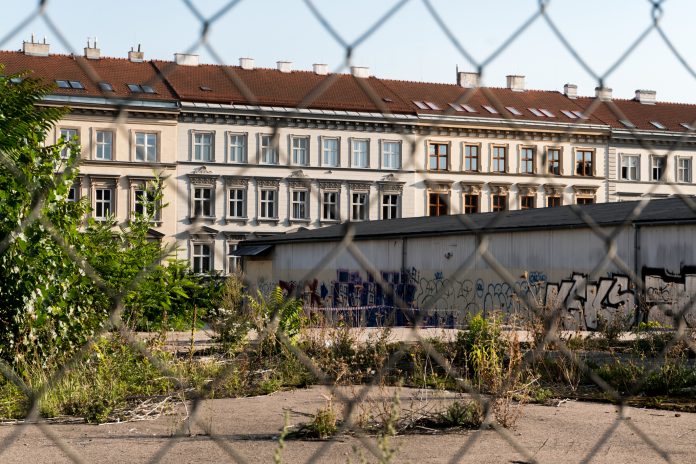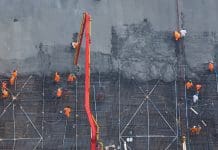It’s time for the construction industry to set aside the wrecking ball and rethink how it uses brownfield land, argues Nick Russell, director of civil and structural engineering consultancy Thomasons
With seemingly relentless pressure to deliver more housing and infrastructure, there is an understandable temptation to just get on with building on greenfield land to meet immediate demand. But I think the sector needs to pause and reflect on the existing built environment and how we can capitalise on brownfield and the potential to retrofit.
This brings to mind a piece of research published by the Campaign to Protect Rural England (CPRE), published on March 2019. The pressure group’s findings reveal we are currently sitting on areas of brownfield collectively the size of Birmingham (around 26,000 hectares), of which over half is ready for immediate development. Here exists a golden opportunity, from addressing the current housing crisis and overhauling our tired infrastructure network, to revitalising our struggling high streets and re-empowering local government.
It’s a positive vision but first things first: the construction industry needs to have a more open discussion about brownfield sites and actively improve public and investor understanding of how these areas can be utilised, both commercially and socially.
Presently we are faced with a number of hurdles. Chief amongst these is an attitude of short-termism. On face value, building on greenfield can seem like the most cost-effective option; you’re not confronted with the initial, significant expense of clearing land and managing contaminated materials. However, often it’s more beneficial and less wasteful to spend more at first to build sustainable structures with a long lifespan or retrofit a structurally sound building, which could be given a new lease of life.
This raises further questions concerning our understanding of the term ‘value’ and how it relates to our client and end-users as opposed to shareholders alone. Of course, I’m not suggesting that construction companies should not seek to turn a profit but that, perhaps, we could start adopting a more holistic approach to the work we do.
Indeed, long-term value exists in brownfield sites, which a savvy investor or CEO can quickly see. In short, knocking down is not always economical.
From my perspective, it’s encouraging to see a developer looking beyond the culture of demolition to explore how perfectly robust structures can be reimaged and brought up to modern standards and taste. This makes full use of the building’s lifespan instead of dusting off the wrecking ball prematurely.
This neatly segues into discussing another misunderstood term, ‘sustainability’, which has to go hand-in-hand with ‘value’ when talking about brownfield. The whole drive to build on the greenbelt and greenfield sites appears to be a regressive solution to our current needs, especially when you consider CPRE’s finding. What do we mean by sustainability? Is it merely making sure a building is as ecologically friendly as possible? I believe it means so much more. Surely the term also applies to delivering buildings that stand the test of time, designed for a period of time appropriate to its use, and equally structures that strengthen and benefit the local community. It’s time we empowered this word with a richer meaning and applied it to our standpoint on brownfield.
However, if we are to look at this issue through the current prism of opinion, there’s a compelling argument that favours brownfield. This is particularly pertinent to sites on which existing structures stand (eg mothballed factories or disused airfields). All too often, buildings with an existing embodied carbon are replaced with new development.
Demolition might seem a safe option but is not always appropriate for the local area or beneficial to the welfare of residents and workers. Superficially, it’s more financially prudent but as we well know, new buildings require further embodied carbon and environmental disruption.
We need to be more thoughtful about the ‘Best Option’, is it a revamped old building with embedded carbon or a new facility with additional carbon but potentially lower running costs? Equally, it is our responsibility as an industry to champion better practice? Brownfield land gives us a chance to demonstrate this.
Looking beyond refurbishment and concentrating on former industrial sites where contamination exists, the current wisdom is to leave these areas as they are and to manage the pollutants, as opposed to excavating and removing them. This approach has arisen from necessity, as few places in the UK and Ireland accept and process this type of waste. It’s encouraged us to become more creative.
There are so many solutions at our disposal, particularly in how we handle ‘pollution linkage’. This ranges from covering a contaminated space with a suitable thickness of inert material to rethinking the type of building that occupies the plot (eg housing vs. commercial/retail). Alternatively, we can use advanced cleaning techniques, as opposed to removing the materials and simply relocating them elsewhere.
Looking ahead, one of the current prime ministerial candidates, not particularly noted for his track record of useful builds during his tenure as the mayor of London, has at least made clear his intention to play brownfield to his advantage. It’s a start, at the very least.
What does this mean for the UK as a whole? The land is there but one might argue that the will from contractors and developers is not.
We must present some of the benefits and perhaps I can encourage those reading this article to reconsider all options as well as demolition. Furthermore, as an industry, we have the unrivalled ability and expertise to transform existing communities through increased building on brownfield. There are myriad benefits.
One of the biggest challenges facing many communities now is the erosion of the high street as shopping and social habitats. The evolution of online shopping and big-box retailers being a major cause. Maybe building on, or redeveloping, urban brownfield sites could provide local housing, working environments and other facilities that could give high streets a much-needed boost, rather than unnecessary development of the countryside.
Beyond the industry, and my thoughts, how do we inspire others to adopt a more mature and thoughtful approach to brownfield? Not an easy question, and one which doesn’t have a particularly clear answer. Fundamentally, we need to make a more compelling case, demonstrating that long-term value and sustainability exists within these sites, ready to be unlocked. We also need to give greater authority to local councils (a story for another day) and, for that matter, educating of policymakers on a national level.
The current administration insists it attaches “great importance” to greenbelt land. As it looks for a quick fix to our current housing, infrastructural and social problems, I cannot see that it’s truly committed to anything but the easiest option. It’s a shorter route but it will rarely get you to your intended destination and no doubt, like those structures of the mid to late 1960s, we’ll all pay the price for them down the road.
In these uncertain times, the jury has to remain out. Let’s hope whoever becomes our next leader thinks long and hard about how we can use brownfield to the advantage of the nation.
Nick Russell
Director
Tel: +44 (0)1483 565 886
Twitter: ThomasonsEng














